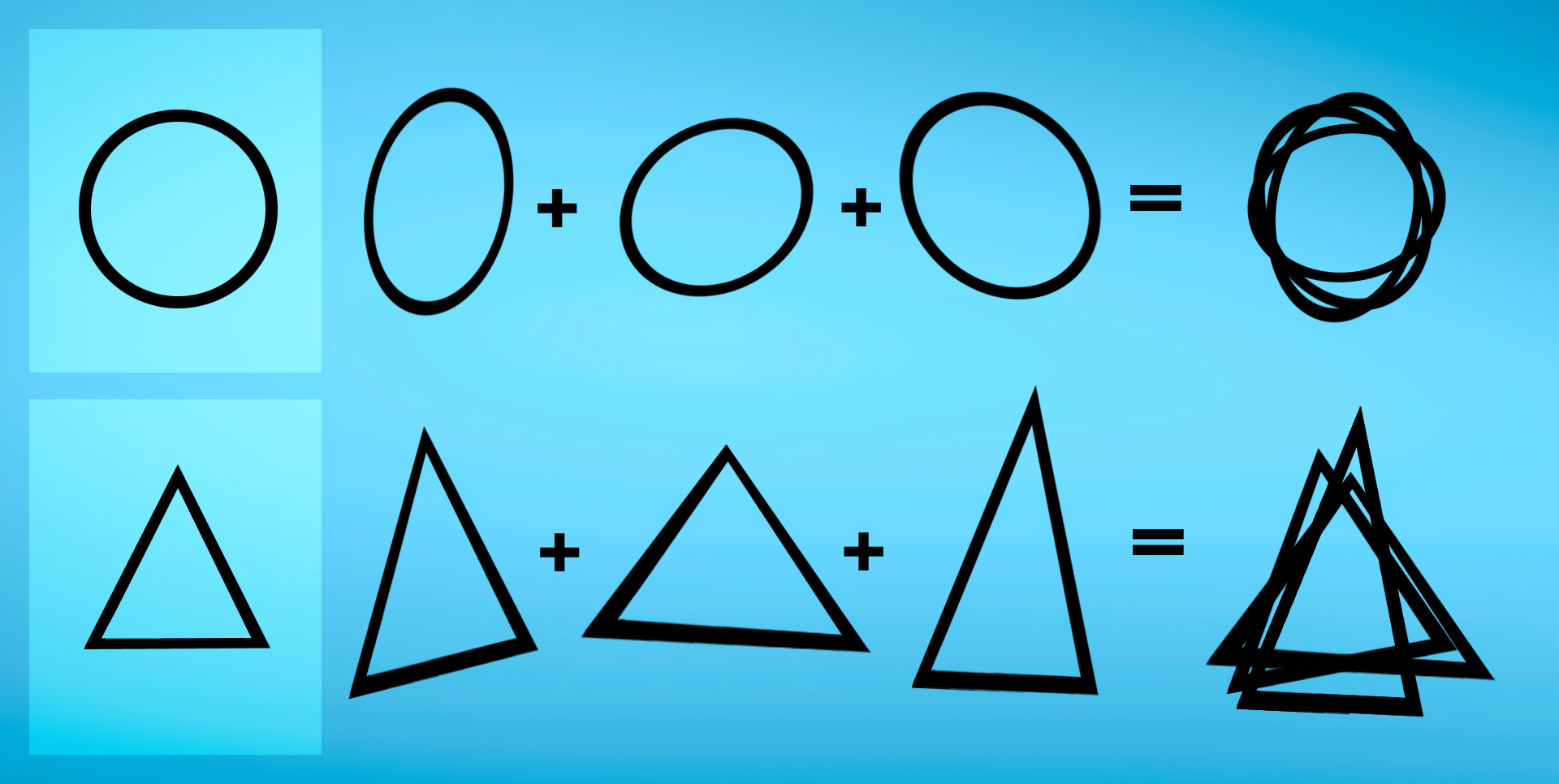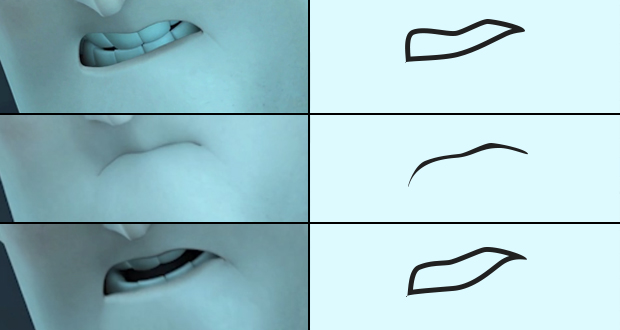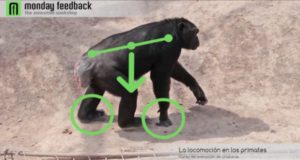Alfred Hitchcock used to say that a good movie is one that you can watch in mute with no need to listen to what the actors say. We should be able to see what the characters are thinking in their faces, in their facial expression.
THE IMPORTANCE OF SHAPES
A very common mistake consists of building the mouth shapes according to the corresponding sound and forgetting that the mouth, above all else, has to convey an emotion. In order to convey emotions through lipsync, we must first take into account what the character is feeling at a certain moment and how its mouth shape ought to be in order to express that emotion. Secondly, we'll mold that shape into the corresponding sound.
The following example is from 'The Incredibles', it's the moment where Mr. Incredible seizes the girl and Syndrome dares him to accomplish his threats. Mr. Incredible is extremely upset and his mouth's shape has to express that emotion throughout the whole shot.
If you notice the mouth shapes, be it an “A” shape or a “U” shape, the mouth shape always holds in relation to the emotion the character's feeling: RAGE
When the animator makes a “U” mouth, he holds the general shape so that the emotional expression is the same and adapts that shape to the “U” by closing the jaw and moving the corners inwards, while the central part makes the characteristic little whole of the “U” sound. With the “T” mouth he does the same, closes the jaw and moves the corners outwards to achieve the shape that corresponds to the ”T” shape, but preserves the overall shape of the mouth so that the expression of rage is clear and readable to the audience.
Why is it so vital to keep the mouth shape? You see, it's a matter of visual language. If we wished to convey a square shape to the audience, the key drawings should be more or less in that shape and the result created in the viewer's retina would be an image like this: quadrangular.

If we wished to transmit a triangular shape the same would apply and if it'd be circular we'd do it likewise. As you can see, it's essential to keep the shape so that it's clearly and unambiguously etched in the viewer's retina.

If we mixed different shapes within the same animation what we would get is a confused viewer. All of the different shapes would mix in their retina and the resulting image would be confusing.

If we apply this very principle to the mouth shapes of a lipsync, what we must do is create an appropriate shape to the emotion that the character expresses and maintain it for as long as that emotion lasts. We'll create variations of that same shape adapting them to the general shape, ..
We have another good example in Disney's feature Aladdin. In this scene, Jaffar has an evil smile and he keeps it throughout the whole shot. The smile`s shape prevails while the mouth goes on adapting to all the sounds that must be represented: S, O, T, W… The animator maintains the shape of the mouth long enough for the viewer to understand that emotion the character's feeling.
So next time you have to face a lipsync, you have to first think about what emotions your character has to convey. Then find the appropriate shapes that represent each one of these emotions and finally, look for variations of them that correspond to the dialog sounds. Only like that will you be able to convey emotions through lipsync!
 MAXI DIAZ Animation blog
MAXI DIAZ Animation blog






I am impressed with you, They useful to us. I read all your blog’s post. Thanks for sharing this post. It’s very important one and best suggestions and information.